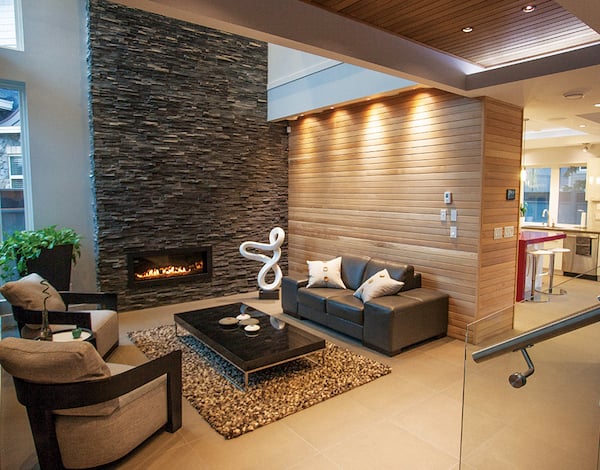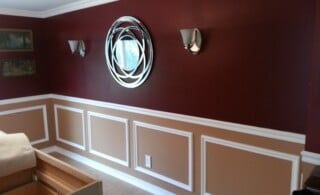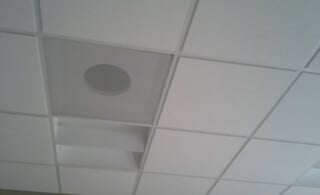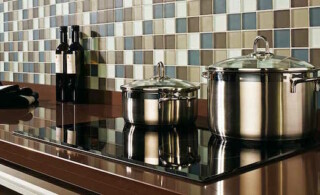
If you have a brick house built after 1940, there’s a good chance you are the proud owner of cavity walls. What does that mean, you may ask? It’s simple: your exterior masonry is actually double-reinforced. These particular structures consist of two brick walls placed approximately 2-4 inches apart, forming a small gap of air between them. Unlike brick facades, both walls are load-bearing but are connected together through the use of small masonry ties. This double-construction not only gives your exterior frame more strength, it also comes with several other energy-saving advantages.
Water Resistance
Brick is very susceptible to water penetration. Moisture has a way of finding tiny hairline cracks in between the masonry and mortar, which eventually makes its way into the home. In cavity walls, the water will infiltrate the exterior facade but, due to the air gap, the moisture won’t be able to jump across to the actual interior wall. Instead, the water collects along the surface of the exterior wall and finds its way back out again through specially designed weepholes drilled into the brick.
Wind, Fire, and Rain
Not only are cavity walls resistant against rainfall and moisture penetration, it’s also impervious to other natural hazards. Due to the double-protection, the exterior barrier can act as a shield against the elements that would normally affect the home. Brick is fire-resistant, which helps to protect the house and lowers your insurance premiums. It acts as a buffer against high winds, saving money on utility bills. Plus, their solid construction creates additional structural support against any damage that may ever occur.
Thermal Insulation
The most important benefit of cavity walls is their energy-efficient capabilities. Even if the interior gap is not filled in, the cushion of air between the two partitions can act as a natural insulator. During the winter, the hollow space between the two structures acts as a reservoir for air escaping the house, helping to reduce energy loss by holding in the heat. But, during the summer, it traps warm air and naturally moves it away from the house through the exterior wall. But all of this is greatly helped if the gap is filled in with cavity wall insulation.
Ready to start your cavity wall?
Find ProsCavity Wall Insulation
If the hollow is unfilled, there’s a good chance you’re wasting money. Though the structure naturally insulates, it isn’t nearly as efficient without some help. In fact, about 30-40 percent of home heat loss can be attributed to lack of proper insulation. Therefore, investing in cavity wall insulation regulates the internal temperature of the home, removes condensation build-up, reduces unnecessary energy waste, preserves our nation’s natural resources, and eventually saves you big money on utility bills. The initial cost isn’t much compared to the long-term savings (you should start seeing a return on your investment within a couple of years). Plus, it can be retroactively installed since it can be blown through the preexisting weepholes, or new holes can be quickly created and covered over within a matter of hours.
Types of Cavity Wall Insulation
Cavity wall insulation is available in primarily three materials: mineral wool, urea formaldehyde foam, and expanded polystyrene beads. Each has its own slight variations and relative pros and cons that should be evaluated on a case-by-case basis. All three have very similar general characteristics. Most homeowners have tunnel-vision for R-value (insulating performance) when looking at different materials. In the case of cavity wall insulation, however, your primary concerns should be to retain the water and fire resistance and indoor air quality of your home. That’s why these three materials are the most commonly used in conjunction with cavity walls.
- Mineral Wool: This material can be made from fiberglass or rock wool and resembles common forms of attic insulation. It must be treated to create the required level of water resistance.
- Urea Formaldehyde Foam: This water-based foam works into the cracks and seams of your cavity walls before drying. During this process air bubbles are trapped inside the foam, which help to reduce heat loss.
- Expanded Polystyrene Beads: Rather than foam, individual beads are mixed with an adhesive and blown into the walls, again creating insulating air bubbles.
 Decorative Moldings: The Perfect Cover-up
Decorative Moldings: The Perfect Cover-up  Dream Remodel, Real-Life Budget
Dream Remodel, Real-Life Budget  Acoustic Ceilings
Acoustic Ceilings  Load Bearing Walls: Thank You for Your Support
Load Bearing Walls: Thank You for Your Support  Decorating with Glass Wall Tile
Decorating with Glass Wall Tile 

Are You Familiar With This Topic? Share Your Experience.